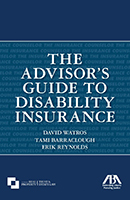 VERDICT: It’s a Keeper
VERDICT: It’s a Keeper
Garriott’s Medicolegal Aspects of Alcohol
Edited by Yale H. Caplan & Bruce A. Goldberger (Tucson, AZ: Lawyers & Judges Publishing Co., 2017). 720 pgs. $199. Order, www.sales@lawyersandjudges.com.
Reviewed by Daniel Schmeeckle
Here’s to alcohol! Specifically, Garriott’s Medicolegal Aspects of Alcohol because it is the preeminent treatise on the topic. Given the length of the book (686 pages) and its exhaustive treatment of many esoteric topics, it functions solely as a reference manual.
For most lawyers, many chapters of the book may be too technical for practical application. For instance, the chapter on “statistical applications of forensic toxicology” starts with a basic statistics 101 refresher but quickly moves to complex regression models. Likewise, knowing the experimental basis of alcohol-induced psychomotor performance impairment is interesting but not of everyday significance for most lawyers.
Want to Review a Book?
Please request a book and writing guidelines from Wisconsin Lawyer managing editor Karlé Lester, at klester@wisbar.org or (608) 250-6127. Reviewers may keep the book reviewed. Reviews of about 500 words are due within 45 days of receiving the book. Reviews are published, space permitting, in the order received and may be edited for length and clarity.
Using acronyms such as “HGN” (horizontal gaze nystagmus) and “WAT” (walk and turn), this chapter explains the background and utility of “FST” (field sobriety testing). Despite being technical, it is readable. At one point in chapter 6, alcohol absorption is described as follows: “5% of the alcohol is absorbed directly through the mouth lining, 25% is absorbed from the stomach into the blood, and 65% or more is absorbed through the wall and lining of the small intestine.” Who knew?
If forced to offer a criticism, it would be that the treatise is too dense. And, for all the book’s density, scant attention is paid to alcohol’s effect in civil litigation cases. To that point, the chapter titled “Alcohol and Civil Litigation” is presented somewhat disjointedly. At times, the authors include complete opinions that appear to have been copied and pasted into the book.
Overall, this treatise is an authoritative text covering a broad swath of practice areas, from less obvious (employment and family law) to obvious (DUI defense). My copy is remarkably dog-eared after less than one year’s use.
Daniel F. Schmeeckle, Minnesota 2010, practices with Anderson, O’Brien, Bertz, Skrenes & Golla LLP in Stevens Point.
 VERDICT: It’s a Keeper
VERDICT: It’s a Keeper
The Advisor’s Guide to Disability Insurance
By David Watros, Tami Barraclough & Erik Reynolds (Chicago, IL: ABA Real Property, Trust & Estate Law Section, 2016). 275 pgs. $79.95. Order, www.amazon.com.
Reviewed by Scott B. Franklin
The Advisor’s Guide to Disability Insurance is a 234-page guide (plus endnotes, appendices, and an index) that strives to educate the reader about disability insurance. Beginning with a brief introduction to the need for and history and evolution of disability insurance, the book offers charts and explanations of why one needs disability insurance and compares this need to having life insurance and long-term care insurance.
The guide explains the differences between group and individual coverage and discusses Social Security Disability Insurance. The overview also broaches topics such as pension plans and associated hardship distributions, business-overhead coverages, and specialty risks.
The resource then goes into a more in-depth discussion of individual disability insurance and the various features an advisor should consider when discussing such products with clients. There is a similar detailed discussion covering group disability plans and the multitude of products available for this market segment. The information forms the basis for the later discussion of integrated group-individual plans, particularly the advantages of such plans.
The guide also discusses the underwriting considerations inherent in obtaining disability insurance and what factors may be taken into account before a policy is issued. Once an individual has disability insurance, the issuer will likely provide guidance and instructions on what to do in the event a claim arises. One chapter of the guide covers the basics of filing a claim. It even has some statistics as to why claims might not be approved.
Important for small-business advisors and their clients, there is material covering salary-continuation plans and other types of employment agreements that might be established by a business and its employees or shareholders.
Another chapter of the book covers how to evaluate and select a disability insurance provider, including considering the size of the company. The authors list (as of its 2016 print date) the top 10 carriers for individual policies, employer-sponsored policies, and group long-term disability carriers. It is interesting that these three lists were neither identical in ranking nor membership across these three different lines.
Equally as important, there is a discussion of the four major ratings agencies that help advisors analyze the strengths and weaknesses of the various insurance companies. And, even more important than the private ratings agencies are the statutes and regulations promulgated to govern the insurance industry. This guide discusses this topic, including both ERISA and HIPAA, along with a few other lesser-known federal laws.
The guide provides a detailed grid mapping out the income tax implications for each kind of policy for each type of entity (sole proprietor, LLC, corporation, and so on) and whom it benefits (owner, employee, shareholder, and so on) with citations to the relevant tax code provisions.
In keeping with its title, the book concludes with a chapter discussing the advisor’s role in income-protection planning, complete with sample planning situations and case studies. This book is a good, solid initial primer for those who will be discussing disability insurance and related topics with their clients. For those doing significant in-depth planning, advising, or selling of policies, this title should be part of, but not the only volume in, one’s professional library.
[Reviewer’s Note: The State Bar of Wisconsin offers disability insurance and other forms of insurance through its member affinity program and Bultman Financial Services.]
Scott B. Franklin, Marquette 1995, Kohler and Franklin LLC, is a Milwaukee-based CPA and attorney advising individuals and small-business clients on a variety of accounting and tax-related matters.
 VERDICT: Not for Me, Maybe for You
VERDICT: Not for Me, Maybe for You
Leading from Within: Conscious Social Change and Mindfulness for Social Innovation
By Gretchen Ki Steidle (Cambridge, MA: The MIT Press, 2017). 264 pgs. $29.95. Order, mitpress-orders@mit.edu.
Reviewed by Dianne Post
In Leading from Within, author Gretchen Ki Steidle focuses on the personal-growth potential of working with vulnerable people, not the political or social-change perspective. She ends each chapter with a series of personal exercises and refers readers to an online tool kit.
The main point is mindfulness – a topic that seems to be popular lately. Mindfulness is paying attention, which becomes more and more difficult as people are addicted to their devices. Steidle’s definition of “leading from within” is to measure your accomplishments not by external goals but by internal measures of personal growth, self-awareness, and consciousness. A lot of the exercises and ideas are replicas of feminist process that I learned 40 years ago.
Many of the suggestions are well known, for example, examine your agenda, do no harm, and engage in meditation, yoga, journaling, and deep breathing. Much of the advice is what I learned in trial school: pay attention to the answer rather than flying ahead to the next question, control responses when things don’t go as expected. I’m sure every one of us has had the experience of a client saying something entirely new or contradictory on the stand. Other topics include negotiating without anger, depersonalizing conflict, internal versus external controls, and the power imbalance.
Mindfulness really boils down to listening. This is so important in international work because so often the individuals and organizations providing aid do not listen to those on the ground. That is where the answers will come from. The author’s goal is to support grassroots groups to carry out their own solutions. Lawyers, too, should ask their clients what they want to do, not tell them what to do. Often, vulnerable groups (clients) just want to be heard. Many of us have been in situations in which our clients just want to tell it to the judge, even though we know the outcome might not be as they like. But they want to be heard.
The discussion of post-traumatic stress disorder, secondary trauma, and addiction to stress that can result from working on these issues with vulnerable populations, especially after a disaster, in a war, or in cases of long-standing violence such as against women and children, is equally applicable to lawyers who work in these violence-wrought fields. The information is particularly relevant to lawyers who want to empathize because a 2009 study has found that when you think analytically, you diminish the part of the brain that lets you empathize. However, that “thinking like a lawyer” model is changing.
The book suffers in some places by an explosion of big words on the page that go on and on but never arrive anywhere. Also, the author assumes that “social change” is always positive, but it can be negative as well. Because of my personal experience working abroad, the book gave me no new information or insights but for someone else who has not experienced that, it could be a good read.
Dianne Post, U.W. 1979, is an international human rights lawyer. She practiced family law in Arizona for 18 years, mostly representing battered women and molested children, and then in 1998 began doing international work mainly on gender-based violence.
